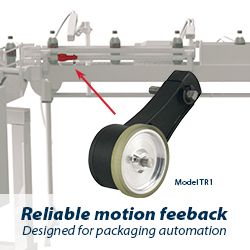When Should You Use 3D Printing for Production?
There are many reasons why 3D printing may be suitable for your hardware design and development cycle. But what about using 3D printing for full-scale production? Here are some considerations when deciding whether to use 3D printing for high-volume, end-use custom parts.
Interview with FactoryFour Co-Founder & CEO Param Shah
In the next 10 years, 4.6MM manufacturing jobs will become open and only 2.2MM are likely to be filled. As this skills gap widens for manufacturing firms, it's going to be critical to run their organizations as efficiently as possible.
Records 1 to 2 of 2
Featured Product

Model TR1 Tru-Trac
The Model TR1 Tru-Trac® linear measurement solution is a versatile option for tracking velocity, position, or distance over a wide variety of surfaces. An integrated encoder, measuring wheel, and spring-loaded torsion arm in one, compact unit, the Model TR1 is easy to install. The spring-loaded torsion arm offers adjustable torsion load, allowing the Model TR1 to be mounted in almost any orientation - even upside-down. The threaded shaft on the pivot axis is field reversible, providing mounting access from either side. With operating speeds up to 3000 feet per minute, a wide variety of configuration options - including multiple wheel material options - and a housing made from a durable, conductive composite material that minimizes static buildup, the Model TR1 Tru-Trac® is the ideal solution for countless applications.


